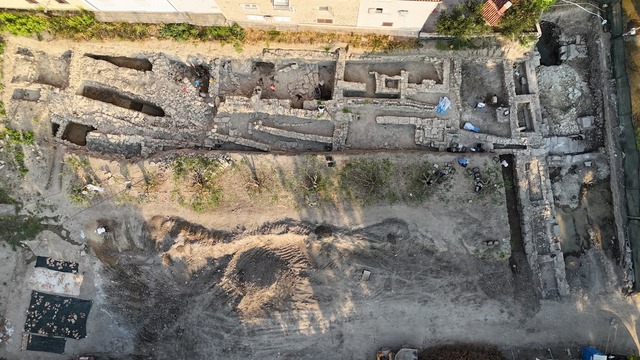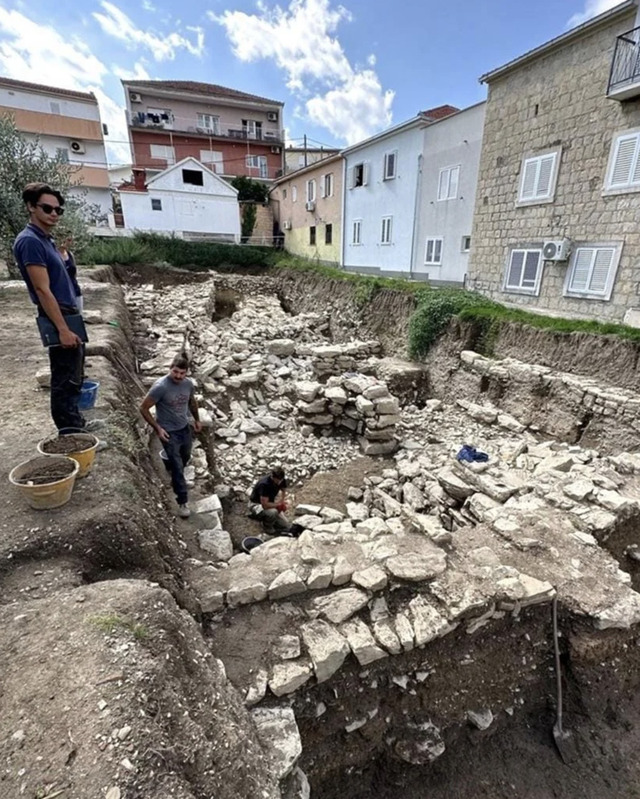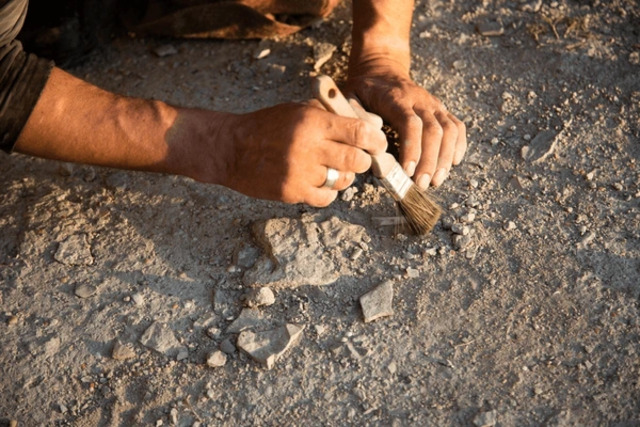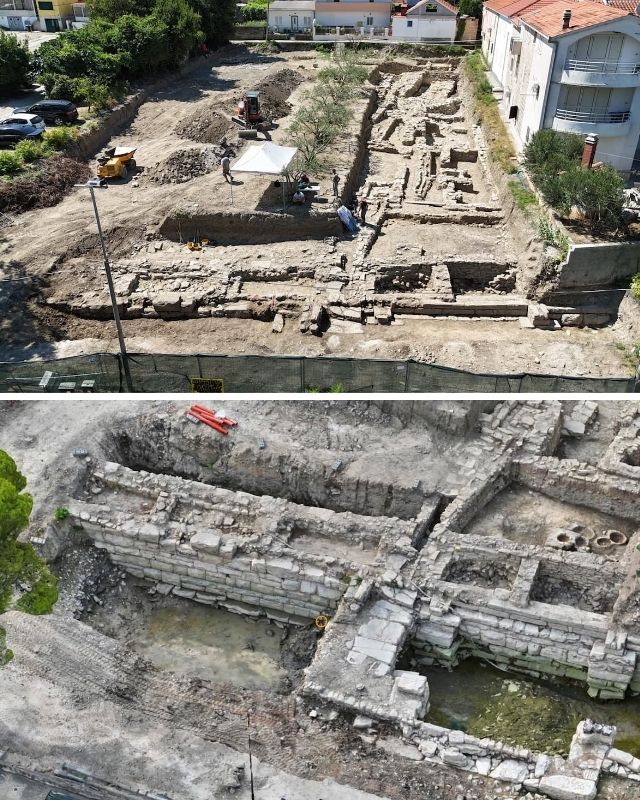Hidden beneath the soil of Stobreč, Croatia, an incredible piece of history has emerged. Archaeologists have uncovered the remains of the ancient Greek city of Epetion, complete with its well-preserved ramparts, alongside structures dating back to the Bronze Age. This stunning discovery offers a rare glimpse into the lives of those who shaped the Adriatic’s past, unraveling stories that span thousands of years.
Epetion: A City Frozen in Time
The Greek city of Epetion, believed to have been founded in the 3rd or 4th century BCE, served as a thriving coastal settlement in the ancient Adriatic. Located in a strategic position, Epetion was a bustling hub for trade and cultural exchange. Its ramparts, unearthed during these excavations, highlight the sophisticated engineering and defense systems of the time.

The preserved stone wall, spanning a significant length, is an impressive example of Hellenistic architecture. The use of large limestone blocks, carefully fitted together, demonstrates the advanced masonry techniques employed by the Greeks. These ramparts served to protect the city from invaders while symbolizing its wealth and importance.
Layers of History Beneath the Soil
What makes this site even more extraordinary is the evidence of continuous human habitation spanning thousands of years. Beneath the Greek ramparts lie traces of a Bronze Age settlement, likely predating Epetion by more than a millennium. These earlier structures, made of rough-hewn stone, point to a long-standing tradition of settlement in the area.
Additionally, layers from the Roman era and the Middle Ages were uncovered, revealing how the site evolved over time. Roman influences can be seen in the remnants of walls, ceramic fragments, and other artifacts that hint at the site’s transformation into a part of the vast Roman Empire. Meanwhile, medieval layers suggest the area remained significant through the centuries, adapting to new cultural and political shifts.
Insights Into Daily Life
The archaeological team has unearthed more than just walls; they’ve uncovered artifacts that offer a glimpse into the daily lives of the people who once called this place home. Fragments of pottery, tools, and even remnants of hearths paint a vivid picture of life in ancient Epetion. These artifacts suggest a community that thrived on trade, agriculture, and craftsmanship.
One of the most intriguing finds is a collection of amphorae, likely used for storing wine or olive oil, key commodities in the region’s economy. The discovery of these items further underscores the role of Epetion as a vibrant trading hub connecting the Adriatic with other parts of the Mediterranean.

A Testament to Preservation and Discovery
The site in Stobreč had long been recognized as historically significant, but much of its potential remained hidden. This discovery was only made possible by pre-construction excavations, highlighting the importance of preserving and studying archaeological sites before urban development.
Croatia’s Ministry of Culture has emphasized the need for careful documentation and preservation of the site, ensuring that this invaluable glimpse into the past is not lost to time. By combining traditional archaeological methods with modern technology, such as 3D mapping and digital modeling, researchers can create a comprehensive record of the site, allowing future generations to explore its history.
Challenges of Excavation
Uncovering a site of such historical complexity is no easy task. Archaeologists faced challenges ranging from the delicate preservation of ancient structures to interpreting the overlapping layers of history. Each layer tells a unique story, and careful excavation was required to ensure no detail was overlooked.
Moreover, the coastal location of the site posed its own set of challenges. Fluctuating weather conditions, combined with the proximity to modern infrastructure, made the excavation process particularly demanding. Despite these obstacles, the team succeeded in revealing a treasure trove of history.

The Broader Historical Context
The discovery of Epetion adds to our understanding of the ancient Greek influence in the Adriatic region. Greek settlers, attracted by the area’s natural harbors and fertile land, established several colonies along the coastline. These settlements played a crucial role in spreading Greek culture, language, and economic practices throughout the region.
Epetion, like its counterparts, was not only a center of commerce but also a cultural melting pot. The blending of Greek, Roman, and local Illyrian traditions created a unique cultural tapestry, traces of which can still be seen in the region today.
A Glimpse Into the Future
The findings in Stobreč are a reminder of the untapped potential of archaeological exploration. As urban development continues to expand, the importance of preserving historical sites becomes ever more urgent. This discovery serves as a call to action for governments, researchers, and communities to prioritize the protection of our shared heritage.
Plans are already underway to further study and preserve the site, with hopes of creating an open-air museum or archaeological park. Such initiatives would allow visitors to experience the history of Epetion firsthand, fostering a deeper appreciation for the region’s rich past.

Conclusion
The discovery of the ancient Greek city of Epetion and its Bronze Age foundations in Stobreč is a testament to the enduring legacy of human civilization. From its Hellenistic ramparts to its Roman and medieval layers, the site tells a story of resilience, innovation, and cultural exchange. This remarkable find not only connects us to the past but also reminds us of the importance of preserving history for the future. In the quiet village of Stobreč, a window to antiquity has opened, offering lessons and inspiration for generations to come.
